I recently dug and divided the salad burnet in my herb garden and a thought occurred to me — why didn’t more people use this ancient herb? With its clean, crisp cucumber flavor, salad burnet is surprising to those who try it for the first time, and appreciated the more it’s used in the kitchen.
Introduced to Elizabethan England in the 16th century as an ornamental herb, the leaves were floated as a garnish in goblets of wine. Eventually they found favor in European cuisine (where they’re often bundled together with other herbs at the markets these days), the name alone telling you what they’re most used for.
But salad burnet (Sanguisorba minor) isn’t just for sprinkling on salads. It can be folded into cream cheese or compound butter to brighten little tea sandwiches, or infused into a bottle of vinegar to make a zesty salad dressing. It can turn into a fresh, tangy puree for topping steamed fish and swirling into light soups. And personally, my favorite is using it as a garnish for gin and tonics, iced teas, lemonades, and what I call “spa water” — cold, refreshing glasses of cucumber- and lemon-scented water.
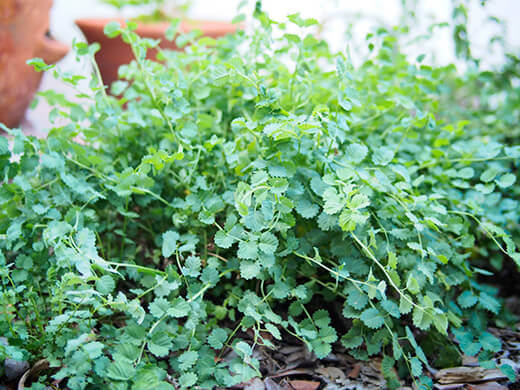
Like many Mediterranean herbs, salad burnet is drought tolerant and heat tolerant. It’s a hardy perennial herb in zones 4 to 10 and can even survive mild winters outside, despite its delicate appearance. With some protection in severe climates, it’s one of the first plants to bounce back in spring.
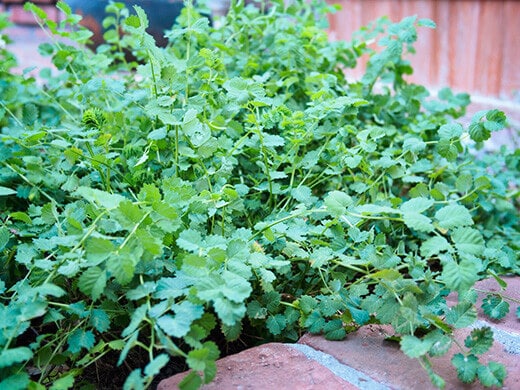
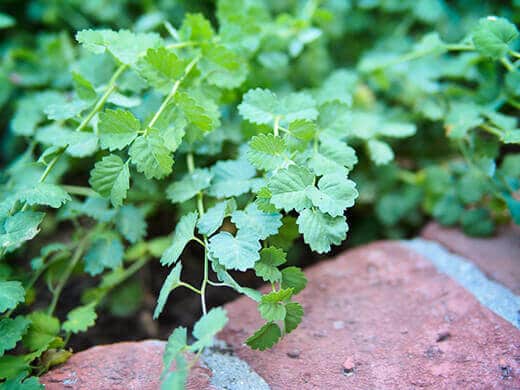
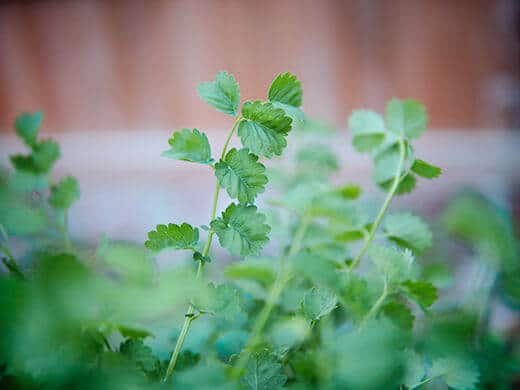
Salad burnet spreads by rhizome and seed and stays green all year long, growing in a low, loose rosette of fern-like sawtooth leaves. It forms a clump that can easily be divided to transplant elsewhere. In spring, clusters of pink and purple flowers appear on spikes, eventually drying into seeds you can collect (or you can simply let the plant self-seed).
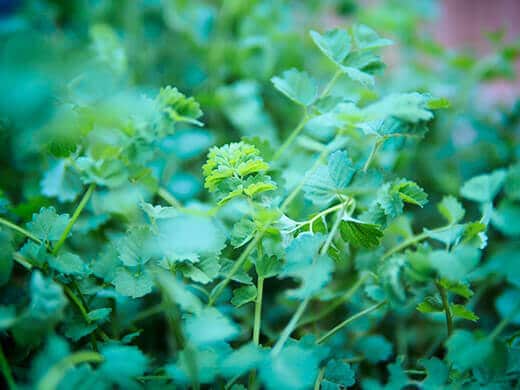
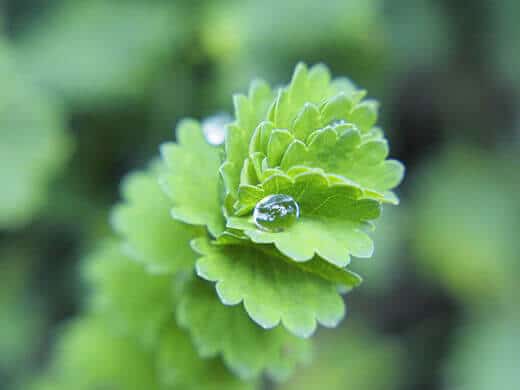
If you cut your salad burnet back (and you should, to encourage the growth of tender and tastier new leaves), you can save the flowers to eat; they’re especially pretty as a salad accent. I liken the taste to borage, another cucumbery plant. The leaves can be stripped off the stems or the stems can be used whole. Their flavor is freshest when picked and eaten the same day.
I grow mine in the middle of an herb bed alongside African Blue basil, True French sorrel, lemon verbena, stevia, oregano, and chives. It also makes an ideal container plant if you’re short on space.
With my cucumber plants winding down for the season, having a handful of salad burnet leaves to toss into a bed of greens instantly brings a bit of summer into the kitchen… a nice way to tide me over until the next crop of cukes come into the garden.


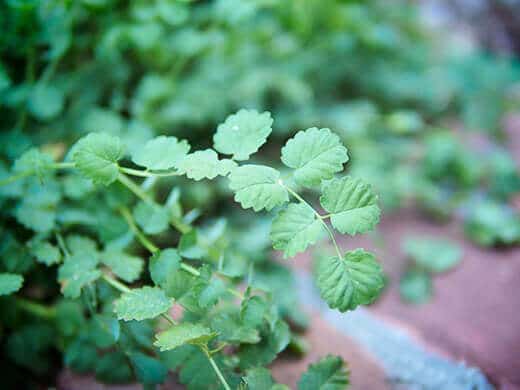













I absolutely love it. It stays looking so pretty in the garden all year round, and it tastes good. I just had some this morning sauted up with fried eggs. 🙂
Sounds wonderful!
Do you grow salad burnet? A herb that tastes like cucumber. http://t.co/uQ7GhHC6VN (I’m going to try it next year.)
Blogged on Garden Betty: Salad Burnet: An Herb That Tastes Like a Cucumber http://t.co/GIv3irtuNm < TY for RT! @sowandso
Hi, I just started following your blog and I’m loving it. I was also hoping I could get some advice. My family is a big cilantro eating clan. I need some help with growing it indoors since I live in Kentucky. Any tips?
Cilantro is a cool-climate herb, so you shouldn’t have any problem growing it indoors as long as it’s not in a hot and sunny location all day. Maybe you can just give it morning sun, or place it in a temperate spot with filtered light. It starts very easily from seed.
This was quite the prolific plant in my 5B garden. Too bad I’m one of the few for whom it tastes like soap, not cucumber.
I wonder if your plant has simply gotten too old? Younger plants have a fresher, more cucumbery and tangy taste, as do younger leaves.
A low-maintenance plant with a light, refreshing flavor. Salad Burnet: An Herb Tastes Like a Cucumber http://t.co/VDqEl9P3PC #gardenchat
Want to try a new (yet ancient) herb this season? Salad Burnet: An Herb That Tastes Like a Cucumber http://t.co/jtJcmud78H #gardenchat
Perfect for salads or floating in cold drinks. Salad Burnet: An Herb That Tastes Like a Cucumber http://t.co/e2dsqwSfZu #gardenchat
RT @ForeverLawn_UK: Salad Burnet: An Herb That Tastes Like a Cucumber | Garden Betty http://t.co/CflFycCR15 #salad #herbs #gardening
RT @theGardenBetty: It’s a hardy perennial with a cool, refreshing flavor. Salad Burnet: An Herb That Tastes Like a Cucumber http://t.co/3A…
RT @theGardenBetty: It’s a hardy perennial with a cool, refreshing flavor. Salad Burnet: An Herb That Tastes Like a Cucumber http://t.co/3A…
It’s a hardy perennial with a cool, refreshing flavor. Salad Burnet: An Herb That Tastes Like a Cucumber http://t.co/3AbcZq8FOY #gardenchat
RT @garden_pros: Salad Burnet: An Herb That Tastes Like a Cucumber | Garden Betty http://t.co/Z40jcS3Yte #salad #herbs #gardening
Salad Burnet: An Herb That Tastes Like a Cucumber | Garden Betty http://t.co/Z40jcS3Yte #salad #herbs #gardening
RT @theGardenBetty: Blogged on Garden Betty: Salad Burnet: An Herb That Tastes Like a Cucumber http://t.co/GIv3irtuNm
Grow this clean, cucumber-flavored herb in your garden: Salad Burnet: An Herb That Tastes Like a Cucumber http://t.co/IJZNVuBH1W #gardenchat
Salad Burnet: An Herb That Tastes Like a Cucumber http://t.co/uudIsRPCFM
This does look like an ejoyable hern to grow and consume. Great post!
Thanks!
Adored salad burnet in our Whittier garden. You are so right about its being hardy and happily self seeding! I am grateful to learn from you that it will do well in my new 6B garden in New England. Wahoo! Welcome home, salad burnet!!! 🙂
In 6b I’d give it as much sun as possible and it’ll be happy. Enjoy your new (old) plant!
Blogged on Garden Betty: Salad Burnet: An Herb That Tastes Like a Cucumber http://t.co/GIv3irtuNm